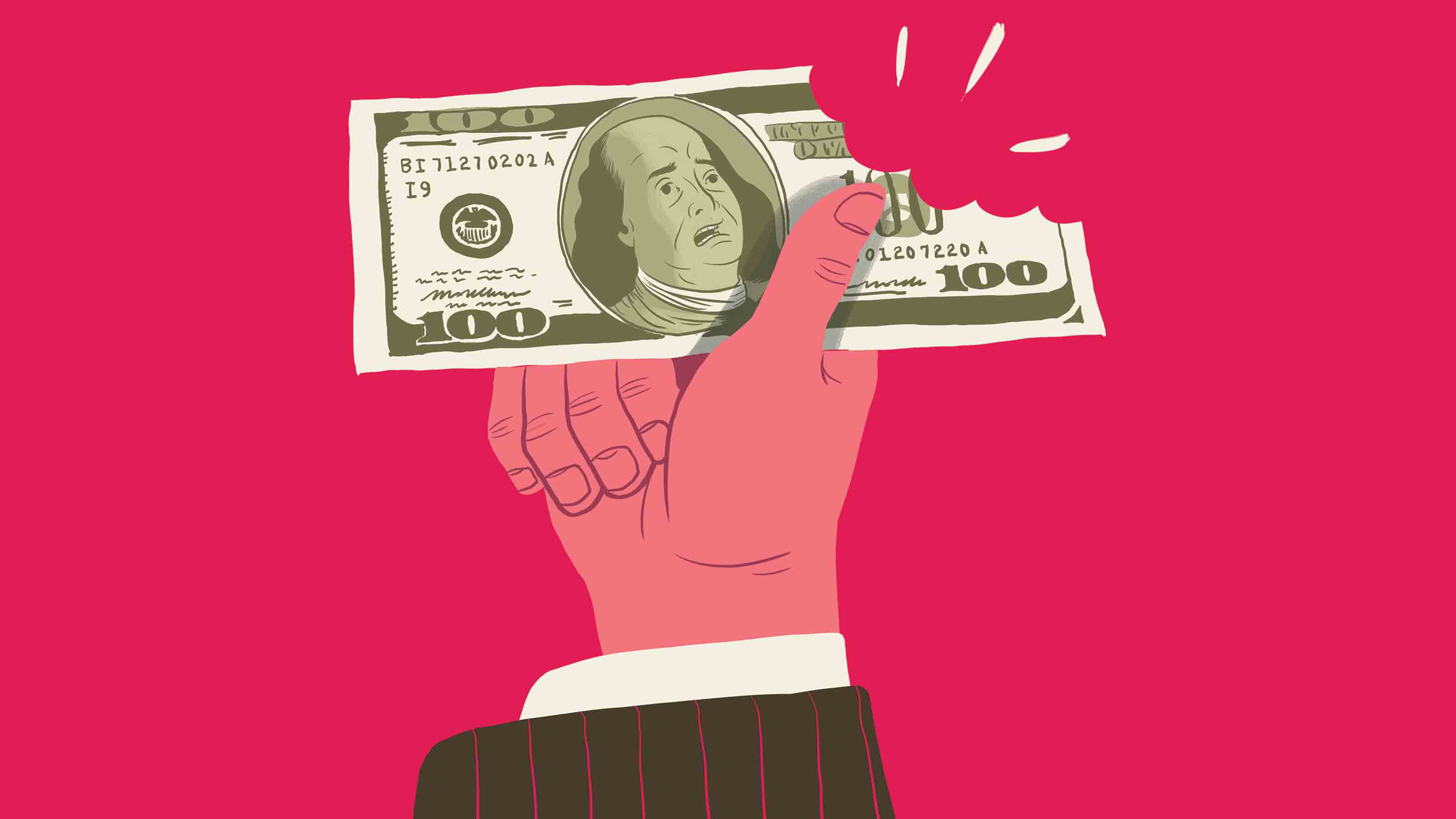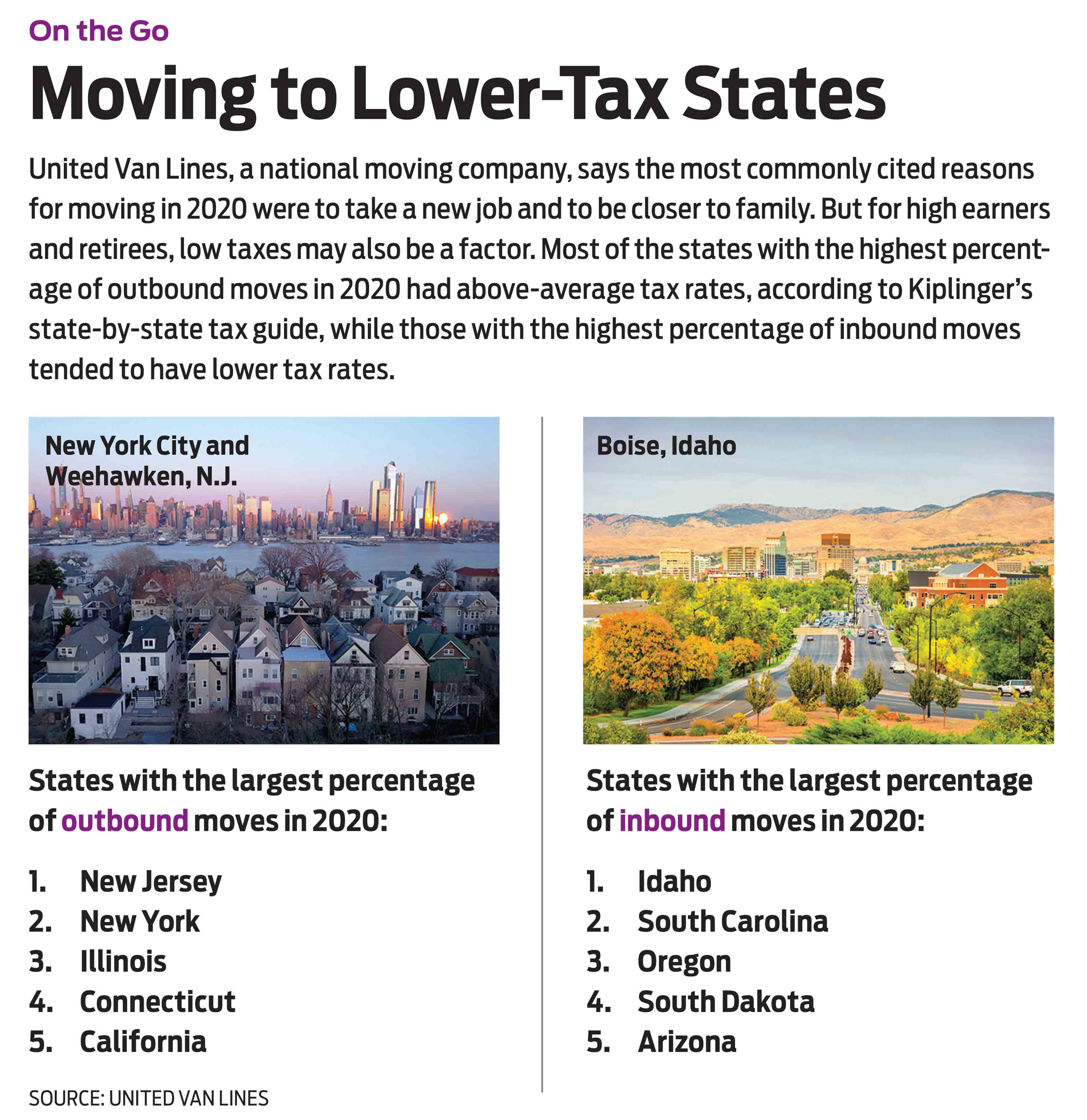States Eye Higher Taxes for Top Earners
The tax revenue could close budget gaps, but the measures could drive away mobile workers.


Talk of tax hikes isn’t limited to Washington, D.C. Several states are also considering boosting taxes on their most prosperous residents.
Jay Inslee, the governor of Washington state, has proposed a 9% capital gains rate on gains of more than $25,000 ($50,000 for married couples). New York Governor Andrew Cuomo has proposed five new, higher tax rates for individuals who earn $5 million or more, with a top rate of 10.82%. Minnesota Governor Tim Walz has proposed a new top tax rate of 10.85% for couples with income of more than $1 million and singles with income of more than $500,000. Walz also wants to impose a capital gains tax of between 1.5% and 4% on profits that exceed $500,000, as well as reduce the state’s exemption from estate taxes.
Pennsylvania Governor Tom Wolf’s plan to raise revenue is broader, in that it would increase the state’s flat income tax from 3.07% to 4.49%. But Wolf also wants to expand the amount of income that low- and middle-income residents can exclude from state taxes, which would end up reducing taxes for those families.

Sign up for Kiplinger’s Free E-Newsletters
Profit and prosper with the best of expert advice on investing, taxes, retirement, personal finance and more - straight to your e-mail.
Profit and prosper with the best of expert advice - straight to your e-mail.
Proponents of the tax hikes say they would help close budget gaps exacerbated by the pandemic, which has forced some states to lay off employees and cut services. But critics say the increases could compel high earners to depart for friendlier jurisdictions.
“States like New York and Illinois are already suffering in terms of outmigration, and taxes have something to do with that,” says Katherine Loughead, senior policy analyst for the Tax Foundation (see below). And as more employers allow their workers to do their job remotely, that trend could accelerate, Loughead adds.
Luring a mobile workforce. With that in mind, some states, eager to attract a newly mobile workforce, are proposing significant tax cuts. Mississippi Governor Tate Reeves, for instance, wants to phase out his state’s income tax by 2030; similarly, West Virginia Governor Jim Justice wants to phase out the Mountain State’s income tax in the next few years.
While scrapping income taxes could make a state more attractive to mobile workers and retirees, states still need to pay for roads, law enforcement and other essential services. Justice has proposed a 1.5 percentage point increase in his state’s sales tax to make up for lost income tax revenue. That would put West Virginia in line with other no-income-tax states, such as Tennessee, which rely heavily on sales taxes to pay the bills. (Tennessee’s average state and local sales taxes total 9.55%—the highest in the U.S.)
Critics of a Tennessee-style tax regime say sales taxes are regressive because everyone pays the same rate and low-income residents spend a higher percentage of their income on goods and services than high earners do. “If you eliminate income taxes and increase the sales tax, you’re increasing the burden on low-income residents,” says Richard Auxier, senior policy associate with the Tax Policy Center. “During the pandemic, these are the people that were hit the hardest.”
Auxier also argues that families usually consider a number of factors when considering where they’ll live, including the quality of schools, availability of broadband and updated infrastructure.
Critics of the race to lower taxes point to Kansas, which slashed its taxes in 2012. The governor at the time, Sam Brownback, said the cuts would be offset by a boom in business development. But when the expected revenue failed to materialize, the state was forced to make deep cuts in spending on education and services. Five years after the experiment was launched, the tax cuts were repealed.
If you’re thinking of relocating to another state—or just want to know how your current state stacks up—check out Kiplinger’s State-by-State Guide to Taxes on Middle-Class Families at kiplinger.com/kpf/taxmap and Kiplinger’s Guide to Taxes on Retirees at kiplinger.com/links/retireetaxmap.

Get Kiplinger Today newsletter — free
Profit and prosper with the best of Kiplinger's advice on investing, taxes, retirement, personal finance and much more. Delivered daily. Enter your email in the box and click Sign Me Up.

Block joined Kiplinger in June 2012 from USA Today, where she was a reporter and personal finance columnist for more than 15 years. Prior to that, she worked for the Akron Beacon-Journal and Dow Jones Newswires. In 1993, she was a Knight-Bagehot fellow in economics and business journalism at the Columbia University Graduate School of Journalism. She has a BA in communications from Bethany College in Bethany, W.Va.
-
 Designing Your 'Immortal' Financial Plan
Designing Your 'Immortal' Financial PlanExplore an approach that offers solutions for those navigating the intersection of longevity, fulfillment and financial security.
By Dennis McNamara
-
 How to Protect Your Privacy While Using AI
How to Protect Your Privacy While Using AIHow to keep your information and finances safe while using AI, including ChatGPT and Perplexity.
By Bob Haegele
-
 Which Generation Pays the Most Taxes in the US?
Which Generation Pays the Most Taxes in the US?Tax Burden Polls show that most people feel like taxes are unfair. But which age group bears the brunt of the tax burden in the United States?
By Kelley R. Taylor
-
 Tax Day 2025: Don’t Miss These Freebies, Food Deals and Discounts
Tax Day 2025: Don’t Miss These Freebies, Food Deals and DiscountsTax Day You can score some sweet deals on April 15 in some select restaurants like Burger King, Shake Shack, and more.
By Gabriella Cruz-Martínez
-
 Tax Time: Does Your Kid Influencer Owe Taxes?
Tax Time: Does Your Kid Influencer Owe Taxes?State Tax Some minors are making big money on social media. Here’s how to know if they need to file taxes.
By Gabriella Cruz-Martínez
-
 Did Florida’s Chance at $1,000 in Property Tax Rebates Vanish?
Did Florida’s Chance at $1,000 in Property Tax Rebates Vanish?State Taxes The Florida Legislature bypassed Gov. Ron DeSantis’ wish to cut property taxes and instead voted to lower the state’s sales tax.
By Gabriella Cruz-Martínez
-
 How Caregivers for Adults Can Save on Taxes in 2025
How Caregivers for Adults Can Save on Taxes in 2025Tax Breaks Caring for your parent or spouse can be stressful, but the IRS offers tax breaks for qualifying taxpayers. Here they are.
By Kate Schubel
-
 New South Carolina Income Tax Cut Might Eat Your Cash
New South Carolina Income Tax Cut Might Eat Your CashState Taxes South Carolina’s flat income tax bill could have the majority of residents paying higher income taxes. Find out how.
By Kate Schubel
-
 Tax-Deductible Home Improvements for Retirement in 2025
Tax-Deductible Home Improvements for Retirement in 2025Retirement Taxes Your aging-in-place plan could benefit from the medical expense tax deduction. But watch out for capital gains and property taxes.
By Kate Schubel
-
 New Colorado Tax Credit: What’s the Scoop?
New Colorado Tax Credit: What’s the Scoop?State Tax Everything you need to know about the Colorado family affordability tax credit in 2025.
By Kate Schubel